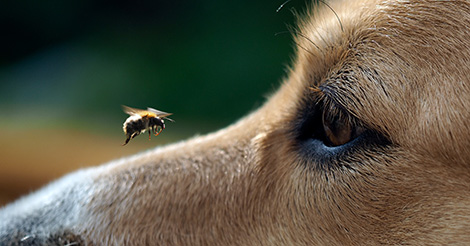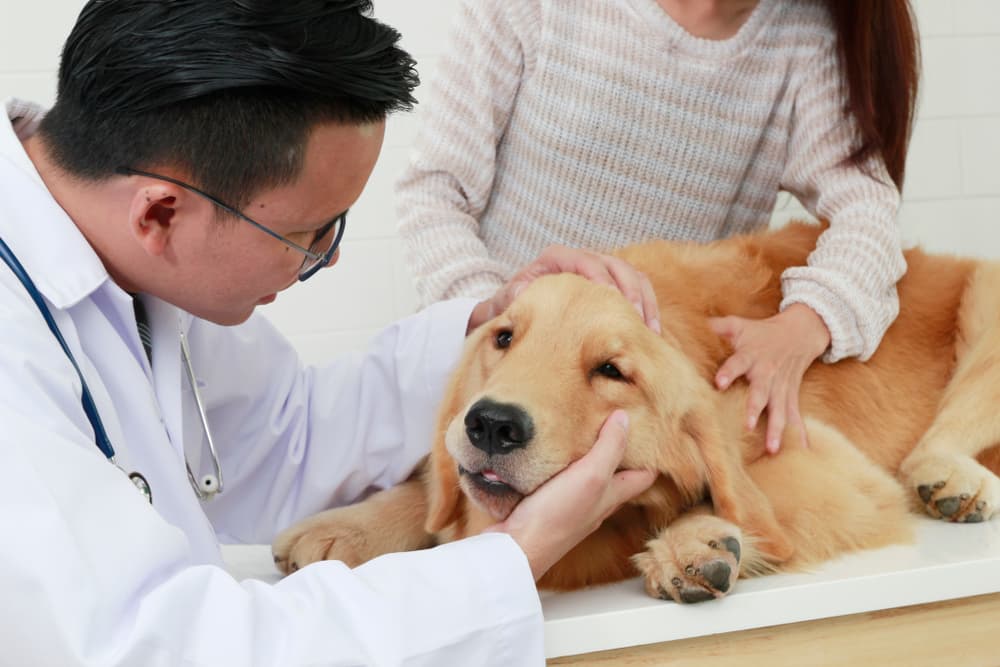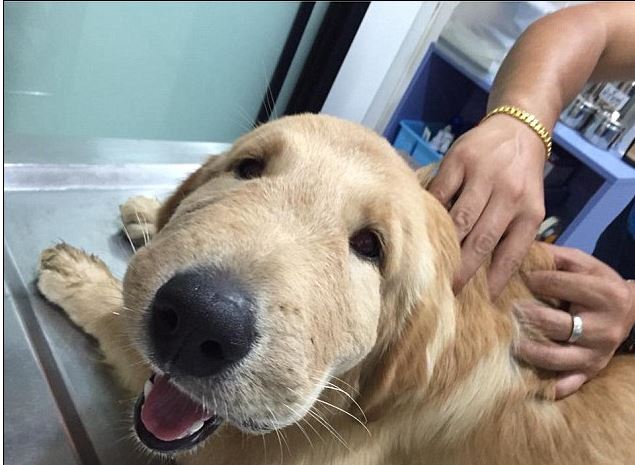Longer days and warmer weather call for the great outdoors.
And what could simply be better for dogs than this? However, while your pup may enjoy soaking up some sun, you can’t ignore those nasty bee stings on dogs.
Yes, the summertime brings with it plenty of bees. And if they ever feel endangered or you happen to run into their territory, you’re definitely at risk. Let’s not forget about how much dogs love chasing these little buzzing insects around. But it’s always associated with a price tag. And in this case, bee stings galore.
So what do you do next? Well, for starters, you’re not supposed to panic. And secondly, it’s smart to adopt necessary measures. Furthermore, bee stings are painful but rarely fatal. Hence, proper precautions and swift actions are the way to go.
Below, we’re equipping you with everything you need to know about bee stings on dogs and more. In short, it’s safe to say that these effective tips will ensure your little dog is up and running again in no time.
Identify the sting immediately and then move accordingly
The first step to counteracting a bee sting successfully is to perform thorough checks on your pup. And that means identifying whether or not they’ve been stung. If yes, search for the exact location and then move on from there.
Meanwhile, you just might be surprised to learn that bee stings aren’t the easiest to identify. No, sad dog pouts don’t reveal much if anything at all. However, you can always pick up on certain clues.
Senior clinicians say that dogs licking paws or chewing paws are always a clear sign. Also, if there’s a certain area that’s painful or tender, note it down. Painful outcries for help or little limps are indications that your pup is in trouble.
Spot that pesky location
Other than actually sticking his nose in the wrong spot, your dog may have mistakenly sat, slept, or stepped in a dangerous location.
Moreover, bees are good at hiding in grassy areas. And if you intend on catching those bee stings early, it’s smart to inspect areas that carry high probabilities for getting stung.
For instance, common areas worth a glance include the paws, nose, belly, and butt too.
Be brave and remove that painful stinger
If you spot a stinger lodged in your little dog’s skin, try your level best to remove it. And that’s because the longer it’s present, the greater the probability of it injecting venom.
But how do you remove it? Well, it’s actually quite simple. Just use the edge of a card or a small piece of cardboard to do the trick. Another great idea is using tweezers for removal. Above all, be gentle about the whole thing because tight squeezes may cause emptying of the venomous sac.
Treat the stung area with great comfort and after-care
Bee stings are probably one of the most uncomfortable sensations in the world.
They are uber unpleasant, leaving a fiery sensation of the worst kind. To help ease that swelling with pain, cold compresses are miraculous options. Other than that, medicines like anti-histamines minimize chances for poisoning.
Last but not least, keep a Benadryl stick with you every time you plan on hitting the outdoors in the summer with your dog.
Keep a lookout for irregular changes- bee stings on dogs
It’s very hard for pet owners to identify bee stings for the first time. And for that mere reason, you need to be extra vigilant. Common examples include increased sensitivity, significant swelling, excruciating pain, and difficulty during breathing.
Meanwhile, in cases of emergency, give your vet a call or rush on over to a nearby clinic for quick assistance.
Watching bee stings on dogs is just too much to bear. But with these effective tips and tricks, your little buddy can heal from pain and suffering in no time.
For more trending news from the world of animals and pets, don’t forget to check out our article Friendship With Animals Exists And These 10 Images Are Beautiful Proof.









